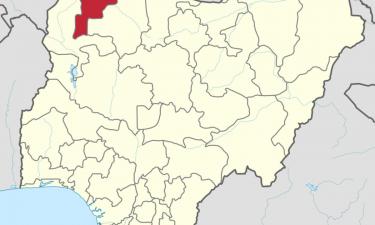Soviet Invention of the 1940s: Concrete Bombs
Although the USA says concrete bombs used in raids on Iraq are the latest innovation, the USSR used them already in WWII
The wonderful weapons that Americans used in raids on Iraq, the concrete bombs, were produced by Soviet plants already in the beginning of WWII. However, it seems that the USA hasn't hit upon another know-how of the Soviet Union. These are slate mines that were produced by the Soviet enterprise Kommunar in the 1940s.
Samples of this "weapon" can be seen in the city preserve museum in the Russian city of Novorossiisk. Deputy Director of the museum Lev Stepko describes the exhibits and speaks about their negative and positive aspects. The waterproof body of the weapon increases its reliability. Only the fuse is made of metal, which makes the slate mine immune to mine-detectors. However, series production of concrete bombs and slate mines was started because of the availability and low price of the stuff they were made of. Weapons of this kind had several disadvantages as compared with the conventional arms: they were very fragile and could be damaged in long transportation. Concrete bombs and slate mines were used by the Soviet army in the Caucasus battle.
However, there are just few documents in the Novorossiisk city museum saying how civil enterprises producing construction materials were turned into defense enterprises. For example, documents in the archives of the concrete department of the People's Commissariat for Construction Materials say, a production line for making concrete bodies for bombs was opened at the enterprise Proletariy. About 20,000 concrete bodies for bombs were produced at the enterprise.
Historian Sergey Novikov searched the archives of the concrete industry museum and found documents proving that all concrete-making enterprises started this kind of production from November 1941 and finished it in August 1942, when German troops neared the city of Novorossiisk. Equipment of the concrete enterprises was evacuated to Georgia and Central Asia then.
As Sergey Novikov says, the concrete enterprises mastered a unique technology. Concrete bombs were mostly used for training purposes, but those produced in the cities of Nevyansk, Volsk and Novorossiisk were used at war. Workers in Novorossiisk made concrete bodies even for unique 5-ton bombs. The usage of those cases depended upon the stuffing. Explosives or chemical agents could be placed inside the concrete bodies; chemical agents were also used in target indicators. Those indicators were dropped on targets, but they didn't detonate and indicated the area for bombing which was clearly seen by pilots in the sky. It is highly likely that concrete bodies were sent to the arsenals where the military filled them with tolite and trotyl.
There is also a version saying that concrete producers even had to stuff the bomb bodies themselves. Documents in the archives reveal anxiety of top managers at the Novorossiisk concrete enterprises: they realized that strict discipline measures must be taken at the enterprises because they were given an unusual task of filling concrete bodies with explosives.
As for production of slate mines at the enterprise Kommunar, historian Sergey Novikov even managed to find a woman participating in the production in the 1940s. Maria Leonova didn't assemble slate mines herself; she worked as an electrician in the production workshops of the enterprise. She says that production of the weapon was started in the autumn of 1941. The production cycle wasn't difficult. Fresh asbestos-concrete mass (so-called eternit) was placed into moulds made of wood. The newly-made slates were used for making boxes of different sizes. Prominent edges of the newly-made boxes were moistened and trimmed. Bodies of mines were placed into special chambers for drying. Those mines were used against tanks. As it becomes clear from the story told by Maria Leonova, the slate boxes were stuffed with explosives somewhere outside the enterprise. Although, the workers of the enterprise didn't have to deal with explosives, they all the same had to keep the details of the work secret.
The war in Iraq has demonstrated that all modern innovations were developed long ago and were recently just furnished with modern details, such as high-precision laser pointing systems. As representatives of the US and UK Air Force say, the latest concrete bombs are meant for hitting particular targets. There is no explosive inside these bombs; the effect of these bombs is based upon kinetic energy and high percussive power. As the coalition forces say, concrete bombs don’t split into pieces and consequently cannot injure accidental victims. They may say whatever they wish, but the present-day hostilities have already demonstrated that there cannot be absolutely humane weapon at all.
Svetlana Dobritskaya
Novorossiisk Rabochy
Subscribe to Pravda.Ru Telegram channel, Facebook, RSS!





